This lesson from the Gordon B. Hinckley manual begins as many pioneer-themed lessons do: with the recounting of President Hinckley’s own pioneer ancestors who crossed the North American plains to eventually settle in Utah. President Hinckley recalls both the experience of three generations before him, including those who crossed the plains, and having three generations after him together with him in the temple. He then reflects:
In that sacred and hallowed house there passed through my mind a sense of the tremendous obligation that was mine to pass on all that I had received as an inheritance from my forebears to the generations who have now come after me.
The lesson is then quick to clarify that with or without ancestors who walked across the plains, that we can all be pioneers in our own lives. President Hinckley hoped that the stories of early Mormon pioneers, as well as modern-day pioneers, would “become a compelling motivation for us all, for each of us is a pioneer in his own life, often in his own family.”
The lesson then goes on to enumerate five principles of the “pioneer heritage of faith and sacrifice” as discussion points, supplemented by talks and stories told by President Hinckley. Most of them are stories from the Mormon pioneers, but I wanted to supplement the stories in the manual with stories from early Mormon women, modern Mormon women, lesser-known stories of pioneer sacrifice and faith, and modern-day pioneering efforts.
1. With vision, labor, and confidence in the power of God working through them, the early Latter-day Saint pioneers brought their faith to reality.
In the book, “Mormon Sisters: Women in Early Utah” by Claudia Bushman, many stories are told about early Mormon women’s vision, labor, and confidence in the power of God working through them. One striking example of this is how women would administer to the sick, give blessings, and anoint one another in times of pregnancy or illness. In fact, Joseph Smith condoned the practice, saying:
Respecting females administering for the healing of the sick. . . there could be no evil in it, if God gave His sanction by healing; that there could be no more sin in any female laying hands on and praying for the sick, than in wetting the face with water; it is no sin for anybody to administer that has faith, or if the sick have faith to be healed by their administrations [1].
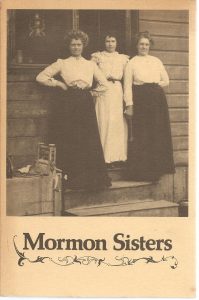 One particular example of women giving blessings of healing is detailed in Bushman’s book:
One particular example of women giving blessings of healing is detailed in Bushman’s book:
Although the practice was not necessarily widespread, it was performed with considerable nonchalance. The sisters’ results compared favorably with the elders’ efforts, according to Abigail Leonard. As soon as she and her family were settled in Nauvoo, a homeless English family arrived and had to be taken in. The woman of the family was sick so the elders were summoned, but their endeavors were unsuccessful.
Quoting Abigail Leonard in Edward W. Tullidge’s book, “The Women of Mormondom,” Bushman continues:
I told the husband of the sick woman that but one thing was left to be done, which was to send for the sisters. The sisters came, washed, anointed, and administered to her. The patient’s extremities were cold, her eyes set, a spot in the back apparently mortified, and every indication that death was upon her. But before the sisters had ceased to administer, the blood went coursing through her system, and to her extremities, and she was sensibly better. Before night her appetite returned, and became almost insatiable, so much so at least that, after I had given her to eat all I dared, she became quite angry because I would not give her more. In three days, she sat up and had her hair combed, and soon recovered.
Surely this is an example of our pioneer foremothers bringing their faith to reality.
2. Early Latter-day Saint pioneers looked to the future with a grand dream of Zion.
Zion, or a place where people are “of one heart and one mind, and dwell in righteousness forever, and there are no poor among them“, has been a central theme of Latter-day Saints, both past and present. One lesser-known story of Latter-day Saints seeking Zion is that of the Armenian Mormon migration from the Ottoman Empire (modern-day Turkey) to Syria in December 1921. The Armenian Genocide, committed by the Ottoman Empire against Armenians from 1915-1923 affected the Mormons who lived there; in fact, “in 1909 there had been over a hundred members; whereas in 1921 only 35 were left [2]. Desperate to find refuge and a place to survive and thrive as a community, former missionary and current Turkish mission president Joseph Wilford Booth applied for passports for the Armenian saints and some of their associates. Upon receiving an audience with a French general who advised Booth that his petition would not likely be favorably received, his application went forward. The Armenian saints fasted for eight days in hopes that their passports would be granted. From Booth’s journal, we read:
In late afternoon I called at the passport office. The whole court below was filled with hundreds of people anxiously waiting to hear their names read out from the upstairs window. I sat and waited in an adjoining upper room and soon the window near me was opened. The roar and tumult of the crowd below was hushed at once on the harsh command of the man who appeared before the multitude to read the names. There was a thrill of joy for everyone whose name was read out, but with its corresponding sadness for all who were disappointed. About 150 names were read out in a clear ringing tone and then the words, ‘Now come the Mormons’ was followed by the reading of 51 names of my list…, which ended the number of passports issued today… Mormons were famous in Aintab today.

And so, with wagons and not much more, the Armenian saints set off for Syria, and after a five-day journey, arrived in Aleppo, Syria on December 16, 1921. In keeping with his commitment to the Armenian saints, Joseph Wilford Booth remained with them in Syria until his death in 1928. He was buried in their newly-founded Zion of Aleppo.
3. The rescue of the Willie and Martin handcart pioneers speaks of the very essence of the gospel of Jesus Christ.
I actually love the story of the Willie and Martin handcart company: despite being warned not to depart so late in the season, the handcart company set off towards Zion with gusto. They later became stuck in Wyoming with blizzards and horrible weather that caused the death of many company members. Brigham Young sent several rescue parties to rescue these pioneers, and the rescue parties also faced danger and adverse conditions, but they managed to escort the weary travelers home, where they were welcomed into the homes of the saints who had already settled, and they were fed, sheltered, and cared for throughout the winter.
In the manual, President Hinckley says:
There are so many who are hungry and destitute across this world who need help. I am grateful to be able to say that we are assisting many who are not of our faith but whose needs are serious and whom we have the resources to help. But we need not go so far afield. We have some of our own who cry out in pain and suffering and loneliness and fear. Ours is a great and solemn duty to reach out and help them, to lift them, to feed them if they are hungry, to nurture their spirits if they thirst for truth and righteousness.
This is a wonderful opportunity to bring up the Relief Society’s recent initiative to assist refugees throughout the world. I love the parallels of the Willie and Martin handcart company and modern-day refugees: both are fleeing and yearning for a better place, many refugees are leaving at times that leave them vulnerable to harm or death, and all carry hope in their hearts for a community that sustains them and allows them to not only survive, but thrive. How can we heed the c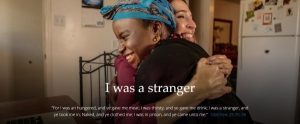 alls of Brigham Young and modern-day prophets and go assist these refugees? How can we feed, shelter, and care for refugees during their season of winter? Perhaps you could ask sisters in your ward ahead of time to prepare to share any experiences they’ve had in working with refugees, or just ask for people to share their experiences in class.
alls of Brigham Young and modern-day prophets and go assist these refugees? How can we feed, shelter, and care for refugees during their season of winter? Perhaps you could ask sisters in your ward ahead of time to prepare to share any experiences they’ve had in working with refugees, or just ask for people to share their experiences in class.
4. Each of us is a pioneer.
One woman I greatly admire is a South African woman named Julia Mavimbela. Julia is from Soweto, South Africa, and lived as a black African woman under the oppressive regime of apartheid. She was raised by a widowed mother, and she was herself widowed at the age of 37, Julia raised six young children as a single mother and was a tireless advocate for women and children throughout her life. She was a founding member and co-president of Women For Peace, which went on to have over 15,000 members worldwide, as well as the first black woman elected as vice-president of the National Council of Women for South Africa. Her work towards peace is perhaps best captured in her community building gardens throughout the township of Soweto. Troubled by the student riots and subsequent police brutality in the 1970’s and 1980’s, she started a community garden to teach principles of self-reliance and community to youth and adults. She famously taught, “Let us dig into the soil of bitterness, throw in a seed, show love, and see what fruits it can give. Love will not come without forgiving others. Where there has been a bloodstain, a beautiful flower must grow.”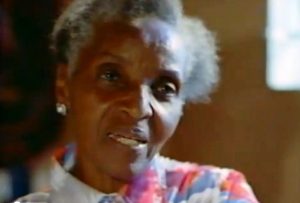
Julia joined the LDS church in 1981, after two young missionaries were helping her clean up a Boys’ club in the township. Baptized on the anniversary of her father’s death, Julia found new ways to reach out to the community. As Relief Society president in the Soweto branch, she helped sisters learn principles of sewing, finance, and sisterhood. Heidi Swinton describes Julia’s life after joining the church as follows in her book, “Pioneer Spirit: Modern-Day Stories of Courage and Conviction.”
Joining the Church did not bring great change into her lifestyle. But how it extended her reach and put all her efforts into a new perspective! This gracious yet forceful white-haired grandmother, fluent in seven languages, explained her now-broadened perspective: “My message is the whole world was given by Heavenly Father for us to live in peace. Color is not a criterion. We’re all children of God, and if we recognize the scriptures and the plan of salvation, then we’ll know what it means to love our brothers as ourselves.”
Julia famously kept a picture of the white prophet, Spencer W. Kimball, on the wall in her home despite intense racial tension. This portrait bore a resemblance to the white Prime Minister of South Africa, P. W. Botha, which almost got her house petrol-bombed by freedom fighters were it not for intervention on her behalf from political allies who understood her devotion to both her church and the anti-apartheid cause.
What I love about Julia is that her membership in the church isn’t the only thing that made her a pioneer: she was pioneering in so many ways before becoming a Latter-day Saint. Her tireless fighting for universal literacy, integrated playgrounds, prison reform, and so many other social justice causes were further enriched by her membership in the church. Furthermore, being a member of the church enabled her to reach more people, to touch more lives, and to grow a community of saints in Soweto. Julia is a wonderful example of a modern-day pioneer, and how we can be pioneers in many different facets of our lives.
5. We honor the sacrifices and heritage of the pioneers by following their example and building on their foundation.
At this juncture, I would invite the class to share examples of how they and others have been pioneers. What can we learn from the sacrifices of both the pioneers crossing the plains in early Mormon history, as well as the pioneers we see around the world today? What sacrifices/sacred offerings can we give to our communities, our neighborhoods, and ourselves? I would then end with the closing quote from the lesson:
With so great an inheritance, we must go forward. We must never let down. We must hold our heads high. We must walk with integrity. We must “do what is right [and] let the consequence follow.”
You could also have the class sing “To Be a Pioneer” as the closing hymn, but since it’s a Primary song and not in the hymnbook, you would probably need to bring a children’s songbook for the pianist and printed lyrics for the class.
***************
[1] History of the Church, 4:604


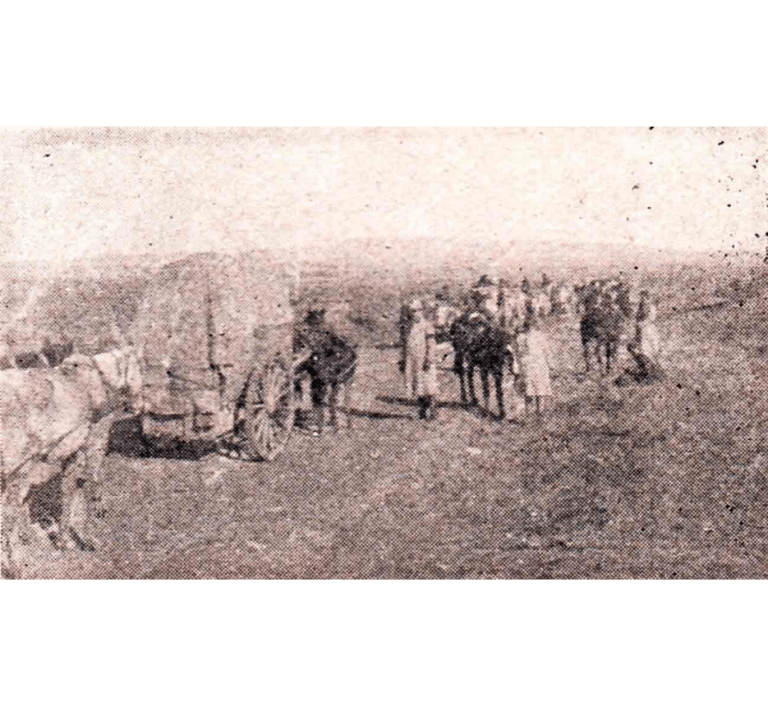
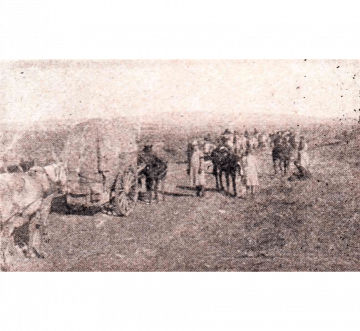

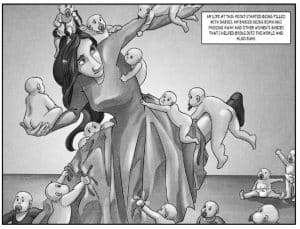
3 Responses
Great lesson ideas, Liz. Love the other stories you’ve included as additional ideas for material. Just thought I’d share this link for a new video the church history department has released on Julia Mavimbela.
https://history.lds.org/article/break-the-soil-of-bitterness/one-womans-quest-for-healing?lang=eng
This is incredible, Alyssa! Thank you!
Alyssa, Thank you for sharing the link to the video. It is absolutely beautiful.